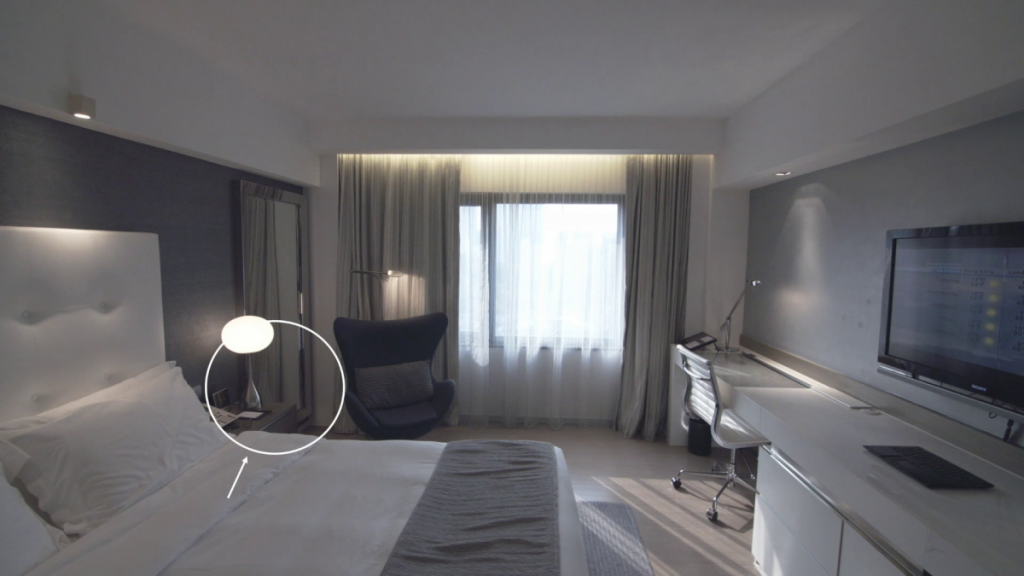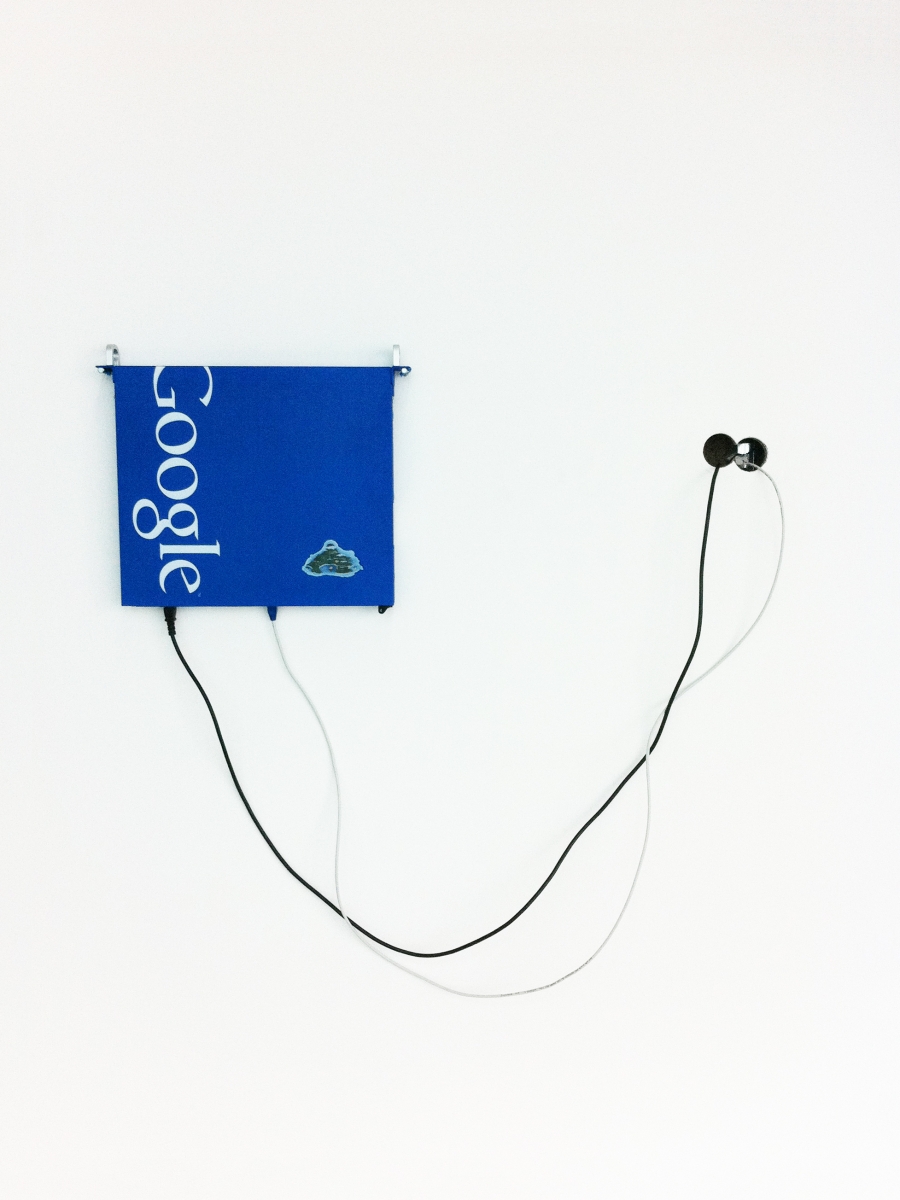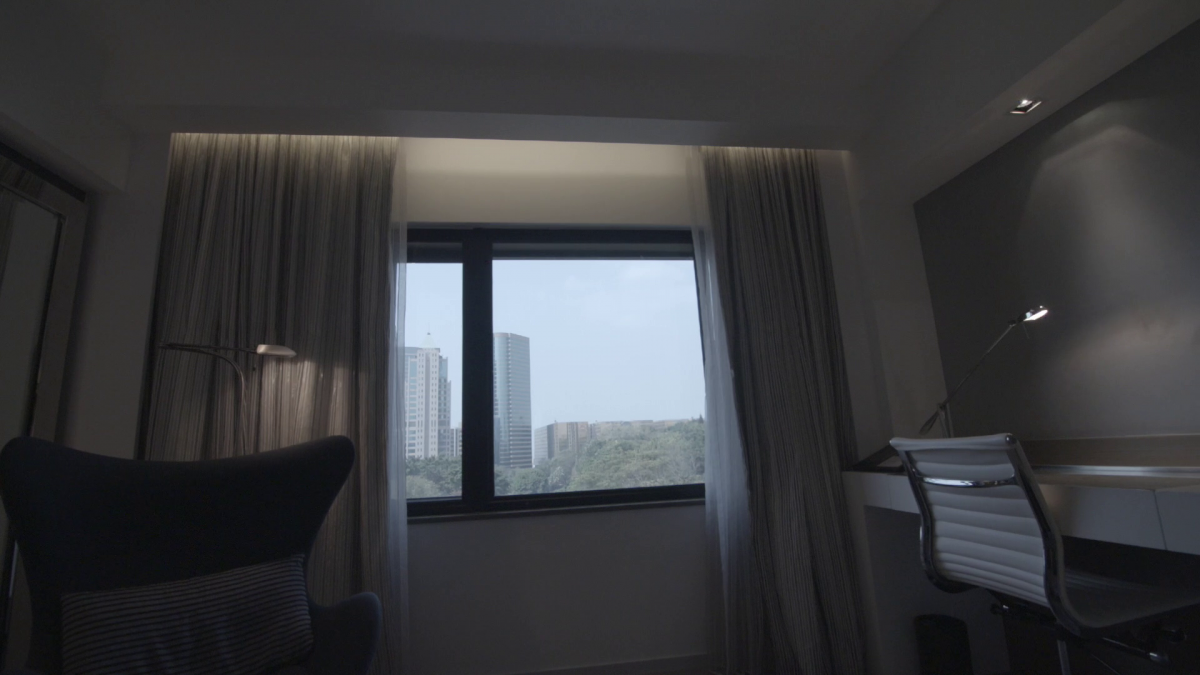
Yuri Pattison, 1014 (video still), 2015. Courtesy the artist and mother’s tankstation limited
Yuri Pattison investigates the forces of labor in digital economies and crooked intersections between the real and virtual in a variety of media: video, web, sculptural installations. In this interview we discussed the notion of abject, which has recently been resurrected to contextualize not only his creative work, but the field of post-internet art in general.
Monika Kalinauskaitė: Your practice uses many material components of internet – technology in its most straightforward, physical sense. It has already been situated in the context of abjection during the 2015 group exhibition at Import Projects in Berlin. I remember thinking back then that the resurrection of this term seems to signify a new awareness of the negative materiality of internet: technological waste, pollution caused by large data servers, exploitation of human resources… The latter being one of the angles you explored in the exhibited work. Could you tell me more about about it – was it a commission, or an older, recontextualized project? How would you articulate your own relationship to this re-emerging notion of abjection – if, of course, there is one?
Yuri Pattison: The dust, scraper, fan series had actually been on my mind for some time, probably a few years before Franziska Sophie Wildförster invited me to consider the proposition she was making in the Abjects show. Her invitation seemed like a perfect opportunity for them to exist.
The pieces emerged out of working with actual 1 unit (1U) web servers, as both hosts for web-based artworks and sculptural objects. It was no longer enough to just make web based work, and the context of where it, with all the data and information, was hosted became increasingly important. I wanted the institutions and galleries interested in working with me on web-based works to treat the invitation the same way they would treat commissioning or installing a physical exhibit. At the time there was a lack of care or understanding, so forcing the institution to self-host the work and to consider that process a part of it became key, specifically in works like Inquire within (Proliant), 2015, or Familiarity Breeds Contentment, 2014. By working with single components of this abstract and infinite structure I was able to come to terms with the architecture of the internet and uncover its flaws and issues.
While working with these second hand enterprise servers, the backbone of the internet, I found their insides caked with dust and detritus. Those servers were approaching obsolescence but still functioned perfectly for my light web traffic needs. They had a very austere design quality not seen in the consumer devices we use to access the information on them, so I also wanted to explore this gulf between functionality and aesthetics in the information economy and really mine the space where physical technology ceases to be a profitable part of it.
What became apparent is that I was also interested in the form factor of the server: its standardized size, its capacity as a malleable storage device and how the internal information is compromised through its daily functioning – how the data contained within is always changing and the hardware is designed to be upgraded before failure. So I used the standardized 1U form factor in my own custom cases and began extracting single elements of these systems, such as cooling fans and power supply, and combining them with physical data and outcomes of my research interests. Some of these thoughts were also seeded after filming in Swedish ISP Bahnhof’s Pionen space for colocation, time displacement.

Yuri Pattison, Familiarity Breeds Contentment (detail), 2014. Installation view: Museum of Modern Art, Warsaw. Courtesy the artist and mother’s tankstation limited
We have already touched upon the vagueness of this new “abject” in our previous correspondence. It seems to be resurrected as a transitionary term, to stand in until a more adequate one can be coined. You also mentioned the Boring Dystopia group, which prompted me to see your own work as embodying a certain constructive awkwardness of machinery. A lot of “nice” and “clean” content, ranging from completely virtual – website graphics and renders – to more or less real-real – like financial transactions – is produced and maintained by electronic objects that can gather dust and grime. They can, as well, produce heat and decay. What would you imagine as an adequate term for this imperfect, perishable, even sardonic machinery? Why would we ever expect a technological dystopia to be interesting at all?
I’m interested in exploring the textures of lived reality, a space which more than ever seems to unfold between constant aspirational messages around new technology and the inherent and predictable disappointment in its reality. The original Boring Dystopia group, I think, was quite important, as it underscored a nuanced understanding of uneasiness of the present and offered images of that boring reality via such an aspirational platform as facebook. It presented that there’s nothing extreme enough to rile against – just slightly gothic undertones of how controls within society are changing.
So I am interested in the format of hardware, but only as it allows the work to become host to lots of other things, a whole range of social references, in the same manner as the actual servers which touch our data. The idea of an end-of-life server, or an end-of-life laptop, is something that can contain memory – both good and bad, personal and of many.
The transparent format servers in the Abjects show were meant to be imperfect objects which become more imperfect through time. Dust, skin, hair and detritus is sucked into them from the gallery space through cooling fans – they become composed of their surroundings and the people there. With this idea I wanted to combine impermanence, particularly within a digital culture, with the fact that we are all implicated and affected by these changes.
I have also previously mentioned how it seems to be exclusively the language that is struggling with this new category. The general awareness of it is out there: in the arts, in timeline posts, in dis and memes. Do you think it is just a passing bump in discourse, or a shift in the speed and nature of understanding of the aesthetics and issues of internet? In your own creative process, do you feel that working with the internet gives you not only the means, but also access to concepts and phenomena that could not otherwise be conceived? Or is the line thinner than I am imagining?
When making work I often consider that I’m doing it through these networks to make something of and about the present, and the fabric of the present is how the world is being re-organized by the effects of the internet. So I try to trace entry and exit points to these networks and make them visible, which might result in work shot by a Bitcoin mine employee in Tibet or having a proxy short in the room Edward Snowden stayed in in Hong Kong. These are very real places, with real people.
But I think there is a bump in discourse as we see how more and more complex technologies, with a niche group that understands them, begin to have global consequences at a rapid pace – there are many recent examples from financial to political. As an artist I try to take the position of the curious amateur, to make work about them in order to both educate myself and reclaim some agency over these often abstract forces. But I think for some people these great leaps are alienating. Art writing has only recently started to drop consistent concepts such as “virtual” and is beginning to come back to a position that is more personal.
I would also like to talk about a work of yours which seems to be way outside the conversation on abject: 1014. The impeccably clean, flawless hotel room, even within the context of Edward Snowden’s journey, is so uncanny that for a moment I was sure I had stayed there at some point. Extraordinary cleanness, smoothness, streamlining – all are components of the uncanny, the repulsive beautiful. The human eye is still human and it seeks out flaws. What do you think is the further potential of this aesthetic now, that sweet renderings of palms and oceans seem to be giving way to rust and debris? Maybe the hyperreal is another form of abjection?
The Mira Hong Kong, where Snowden stayed during his transition from private to public figure, is a very aspirational hotel and its rooms are driven by networked technology – this is one of the main selling points of the hotel. Given the security concerns this choice seems a bit odd, and in my portrait of the location I definitely focus on these slick tech items (the computerized door lock, the complimentary mobile phone, the smart TV, the VoIP phone) and their gothic qualities. So in some ways I wanted to point to and question this hidden potential for horror within or beneath the surface. I should state, though, that I don’t really consider any of my works situating itself in the “abject” but perhaps trying to seek out the more real qualities and textures of the present, the unconsidered and deleted elements. Therefore, I see all of these works as situated on a similar plain.
The hyperreal aesthetic does still deeply interest me, however, particularly the little psychological tricks now used to make these rendered spaces look more real, such as the inclusion of imperfections or dust. I think the aesthetic of the perfect render is still there. It’s just more perfect, more realistic.
There is also the category of liquidity, which is so important to post-internet art today; both in the economic sense and as aesthetics of fluidity. But where there is liquid, there is also waste water. What would you imagine as this flowing, seeping, wasted byproduct of internet and digital technology?
People.
And finally, an openly ridiculous question: what’s your favorite abject, your most recent run in with faulty technology? Do you think in the future we will regularly– and affectionately – recount all the broken robots we have ever met? And those, themselves, will be capable of one of the most human qualities – embarrassment?

Yuri Pattison, 1014 (video still), 2015. Courtesy the artist and mother’s tankstation limited

Yuri Pattison, 1014 (video still), 2015. Courtesy the artist and mother’s tankstation limited






























